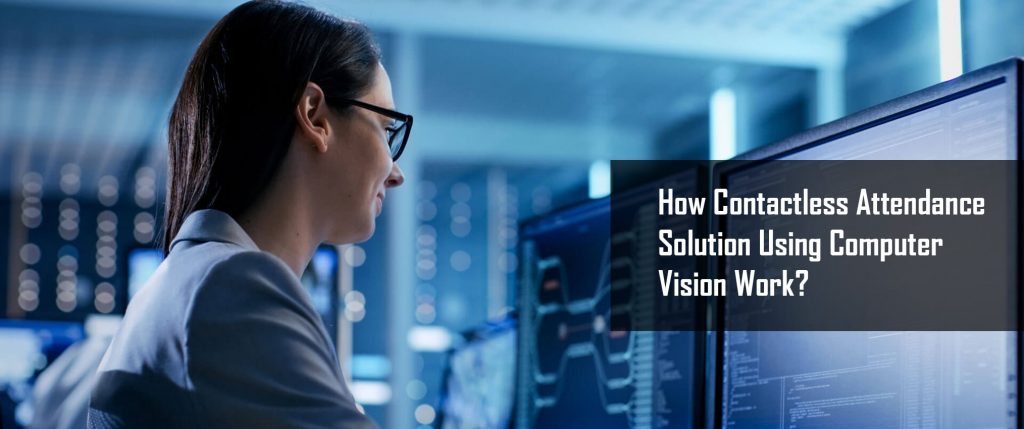[vc_row][vc_column][vc_column_text]The demand for contactless attendance solutions using computer vision is gaining to adapt to the current circumstances and into the future. This solution comes under artificial intelligence development or AI development that takes attendance of people in an organization using face recognition.
[/vc_column_text][/vc_column][/vc_row][vc_row][vc_column][vc_empty_space height=”6px”][/vc_column][/vc_row][vc_row][vc_column][vc_single_image image=”6148″ img_size=”full”][/vc_column][/vc_row][vc_row][vc_column][vc_empty_space height=”6px”][/vc_column][/vc_row][vc_row][vc_column][vc_column_text]

The attendance system can find and recognizing human faces from already existing photos and other data of persons, accurately and quickly. Numerous algorithms and other AI techniques such as deep learning and machine learning services augment this procedure. This helps in exactly matching human faces with the existing data in real-time.
By using efficient algorithms, the facial features or traits of a person are analyzed and compared with the existing database to improve the detection mechanism of the attendance system. Hence the procedure is truly contact less and efficient done with the help of commonly used CCTV surveillance cameras and has a wide variety of practical applications.
The main technology used in this system is computer vision where face detection is part of it. This is integrated with RTSP-enabled (Real-Time Streaming Protocol) cameras. The cameras will detect the faces of each person who is entering or exiting the organization’s premises, every time, and marks their attendance accurately.
Operating/Functioning Mechanism
The system uses artificial intelligence development techniques such as deep learning and machine learning services along with computer vision. The cameras perform facial recognition on the organization’s people while they enter the premises and analyzes their face data to the already existing attendance database with the current time and date. This procedure always detects and captures human face data every time they come and go out of the building. Compared to biometrics or a card reader, this AI development system saves a significant amount of time that reduces the waiting time for people to enter the building.
Requirements for the Contactless Attendance Solution
- Data of people in the organization is fed into the database by the management such as face data (photos) including their own, corresponding to their full names, ID number, and any other required data.
- The system dashboard keeps a log of check-ins and check-outs done by people every time they enter or go outside the building. Computer vision technology captures the face data and only then it’s fed into the system dashboard.
Features
- Attendance reports are generated automatically with data captured by the CCTV or IP cameras installed in the building
-
The need for new and specialized cameras or hardware is not needed as it can work with the existing RTSP-enabled cameras
-
The system can be integrated or used for other administrative procedures as well by the management. In an office, it can be used or integrated for quick and effective employee payroll and HRM functions
-
Integration of smart IoT-based gates facilitates automatic access control when a person’s face is recognized
-
Multi-channel recognition can be facilitated using multiple cameras for augmenting the system’s AI-based face recognition capabilities
-
Productivity monitoring of people can also be done with this system as it will help identify the total productive hours they spend while inside the building.
This is how a contactless attendance solution works using its artificial intelligence development or AI development capabilities such as deep leering, computer vision, and machine learning services. This is a highly efficient system that will save a considerable amount of time for an organization and its people.[/vc_column_text][/vc_column][/vc_row]
